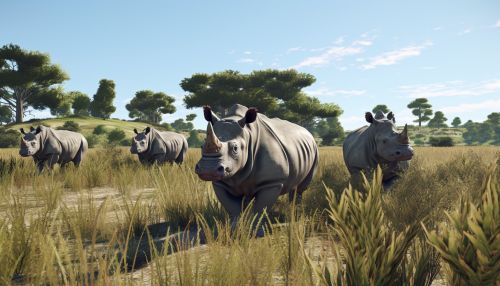Adaptations of Herbivores to Plant Defense
Introduction
Herbivores, or plant-eating organisms, have evolved a variety of adaptations to overcome plant defenses. These adaptations range from physical traits, such as specialized teeth and digestive systems, to behavioral strategies, such as selective feeding and migration. This article will delve into the various ways herbivores have adapted to the defensive strategies of plants, providing a comprehensive and detailed exploration of this fascinating aspect of ecological interactions.


Physical Adaptations
Digestive System Adaptations
Herbivores have developed specialized digestive systems to efficiently process plant material, which is often high in cellulose and low in nutrients. Ruminants, such as cows and deer, have a complex stomach divided into several compartments. The first compartment, the rumen, contains symbiotic bacteria and other microorganisms that can break down cellulose into simpler sugars. Other herbivores, like horses and rabbits, utilize a process called hindgut fermentation, where plant material is broken down in the cecum and colon.
Dental Adaptations
The teeth of herbivores are also adapted for processing plant material. Many herbivores have sharp, chisel-like incisors for cutting plant stems and broad, flat molars for grinding plant material. Some herbivores, such as beavers, have continuously growing teeth to compensate for the wear caused by their diet.
Behavioral Adaptations
Selective Feeding
Herbivores often exhibit selective feeding behavior, choosing to eat certain parts of a plant or certain types of plants over others. This can be a strategy to avoid plant defenses, such as toxins or physical barriers like thorns. For example, some herbivores will selectively feed on young, tender leaves that have lower concentrations of defensive compounds.
Migration
Migration is another behavioral adaptation that allows herbivores to cope with plant defenses. By moving to new areas, herbivores can avoid consuming too much of any one type of plant, which could lead to the accumulation of harmful toxins. Migration also allows herbivores to follow the availability of their preferred food sources as they change with the seasons.
Coevolution of Herbivores and Plants
The adaptations of herbivores to plant defenses are part of a larger pattern of coevolution between plants and their herbivores. As plants evolve new defenses, herbivores evolve new ways to overcome them, leading to a continual "arms race" of adaptation and counter-adaptation.
